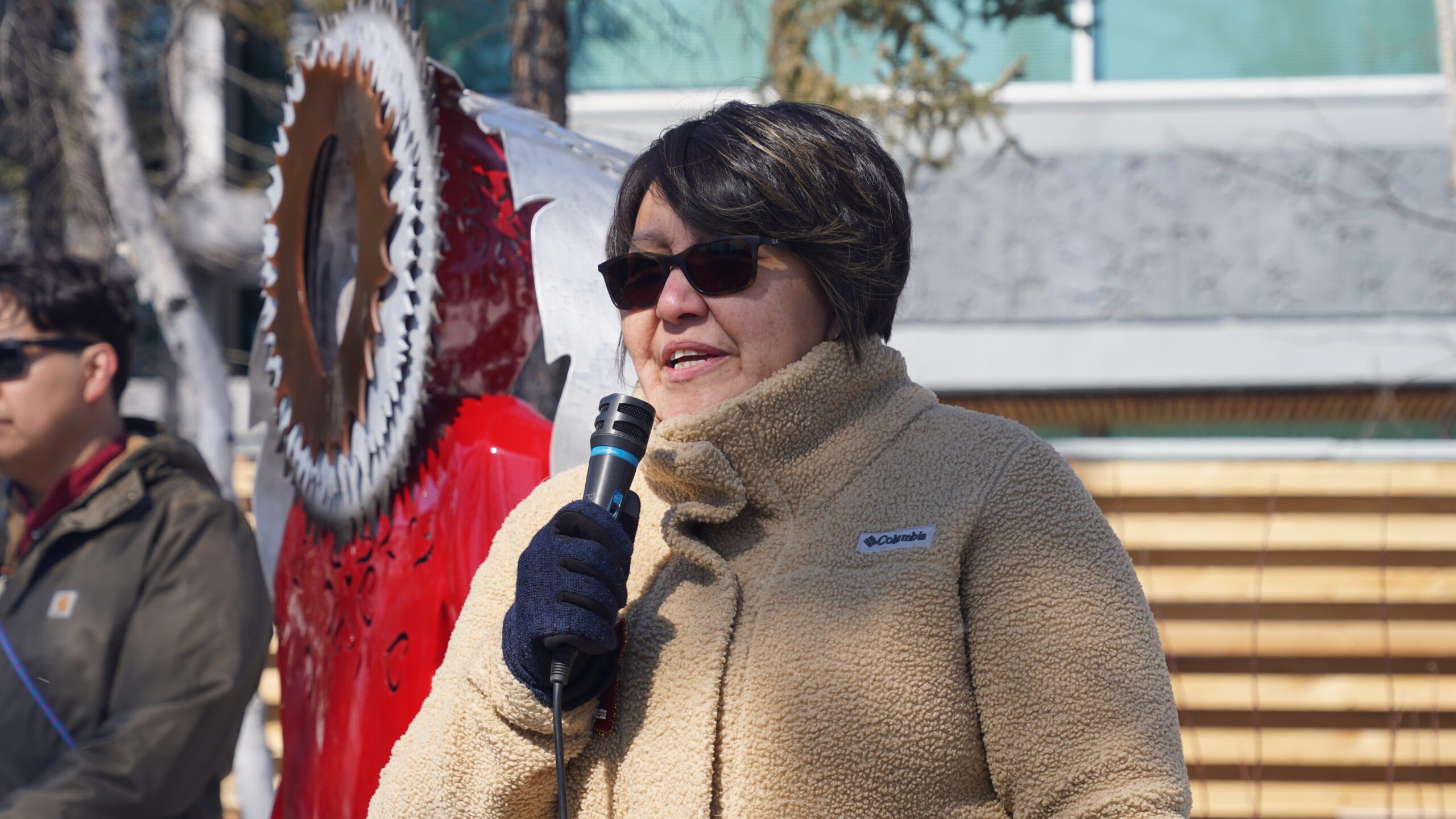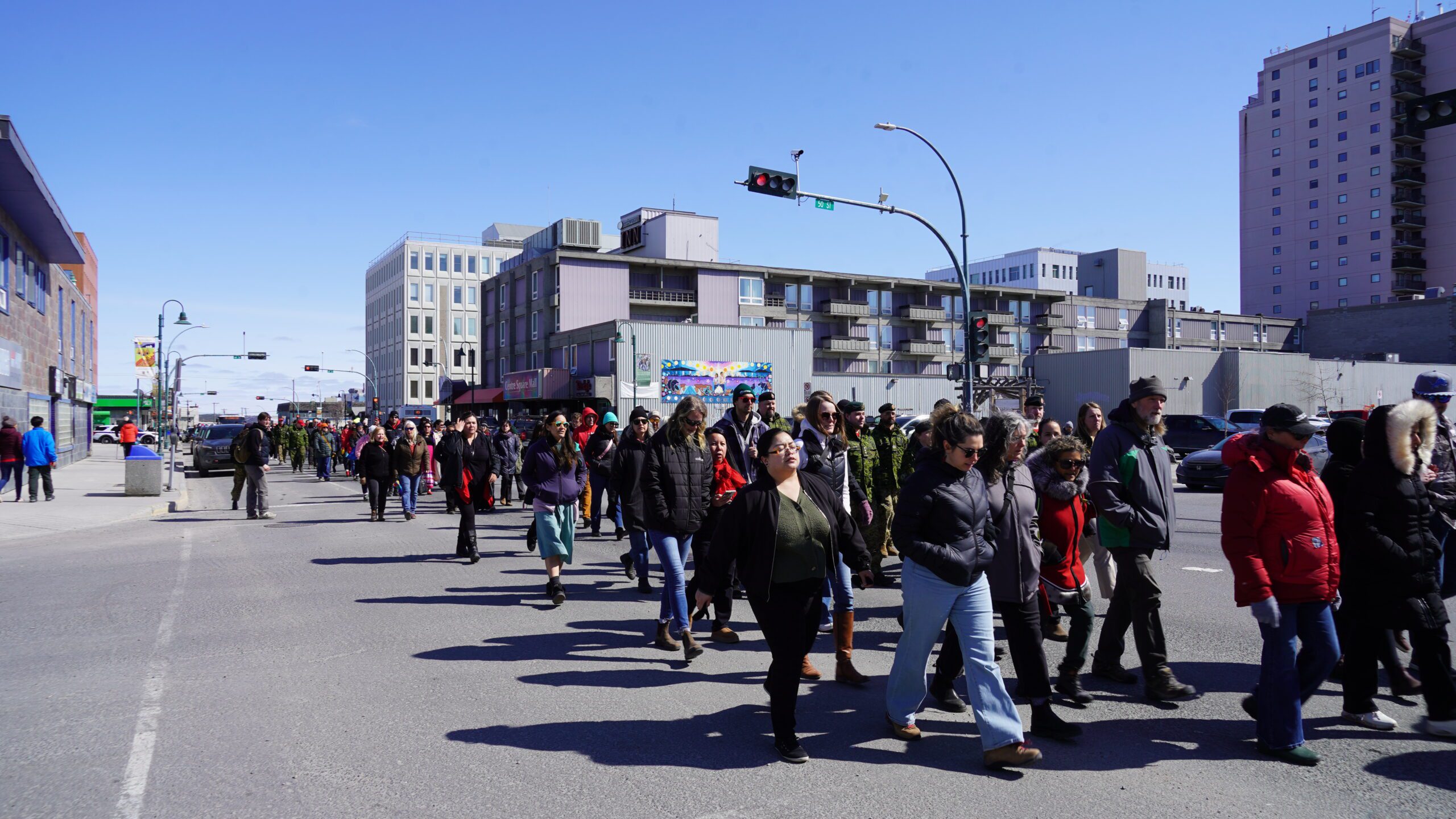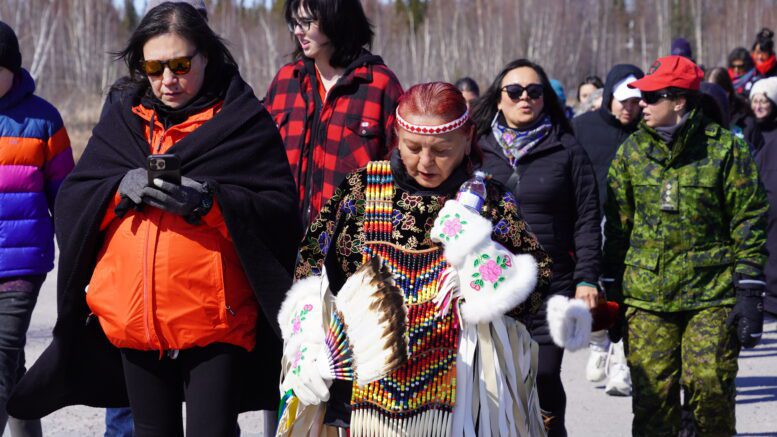*Trigger warning: This story contains details of sexual assault and murder, which may be distressing to some readers.
Melissa Hardisty is still triggered by the day when RCMP rushed to her home and told her that her 12-year-old daughter Etandà was found dead in a river on October 3, 2015.
“She was raped and she was left there to die,” Hardisty told a crowd of over a hundred people who showed up for a Red Dress Day march in Yellowknife on Monday.
It’s a day to honor the lives of missing and murdered Indigenous women, girls and 2SLGBTQIA+ people. Events are held across Canada annually on May 5.
“I didn’t even see my daughter that day, everything was covered up,” she said. “I had to stand there at the airport, watch them put her on a plane and fly her off for an autopsy.”
“My daughter never left my side.”

‘If it helps you get stronger, I’ll tell my story,’ said Melissa Hardisty at the opening ceremony for Red Dress Day on May 5, 2025. (Josie Jiaxuan Wu/CKLB)
Hardisty told CKLB that the murderer was a 15-year-old boy from Fort Liard, who served most of his sentence waiting for court.
“I don’t think it’s fair,” she said. “I really think the judicial system for the youth needs to change when it comes to murder and serious crimes.”
The mother said Etandà is remembered as a loving, adventurous girl who’s full of energy, always wanting to learn and try new things, and had brought great joy to the family.
The family is still waiting on RCMP to get the clothes that Etandà was wearing that day to be burned down as a symbol of closure according to their culture and tradition.
“It’s taking me eight years to tell myself that this is not my fault,” she said. “Every year I feel stronger even though I still weep, I still fall apart when we talk about my daughter.”
Hardisty said her family and community, as well as victim support services, helped her get through the most difficult times. She will graduate will a counselling diploma from Rhodes Wellness College in July, hoping to help people who experienced similar things.

The march began at noon from the Legislative Assembly, through the 50th Street to Northern United Place where participants were served with warm caribou stew and bannock for lunch. (Josie Jiaxuan Wu/CKLB)
The march was organized by the Yellowknife Women’s Society, Native Women Women’s Association of the NWT, YWCA NWT, and Status of Women Council of the NWT.
“Red was chosen because it represents vitality, but it also represents violence,” said Sabet Biscaye, director of the GNWT’s gender equity division. “The color red is also significant to Indigenous people as we believe it’s the only color that spirits can see.”
“We need a day like today because of the violence that our Indigenous women, girls, and Two Spirit people continue to experience every day in our country,” said Biscaye, citing that Indigenous women are disproportionally affected by female homicide in Canada.
Red Dress Day gatherings are held across communities in the NWT, including Behchokǫ̀, Wekweètì, Gamètì, Whatì, Hay River, and Inuvik.
*If you need support, these support lines are available 24/7, including MMIWG2S+ Support Line at 1-844-413-6694, NWT Help Line at 1-800-661-0844, and Kids Help Phone at 1-800-668-6868.





